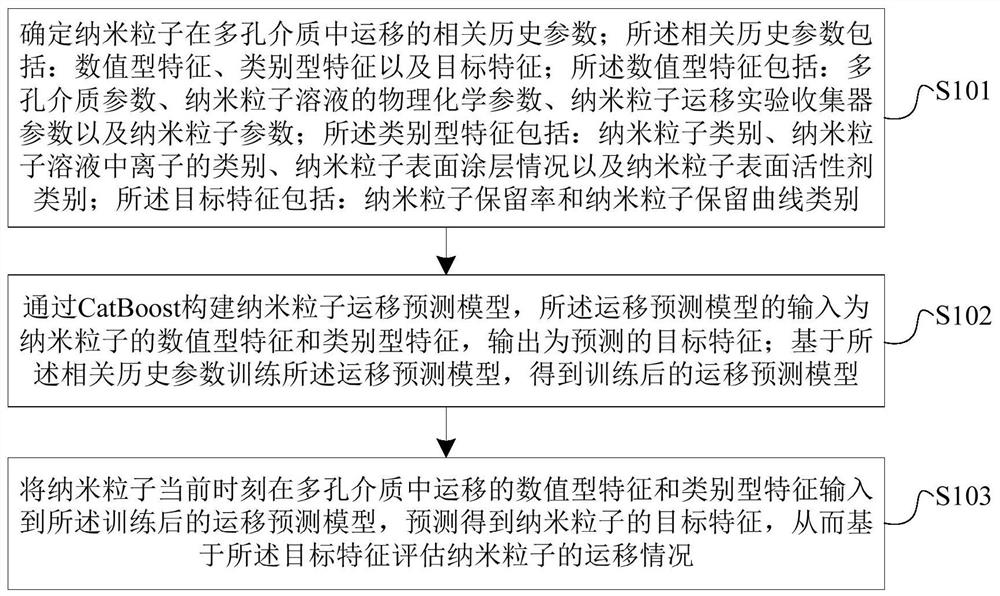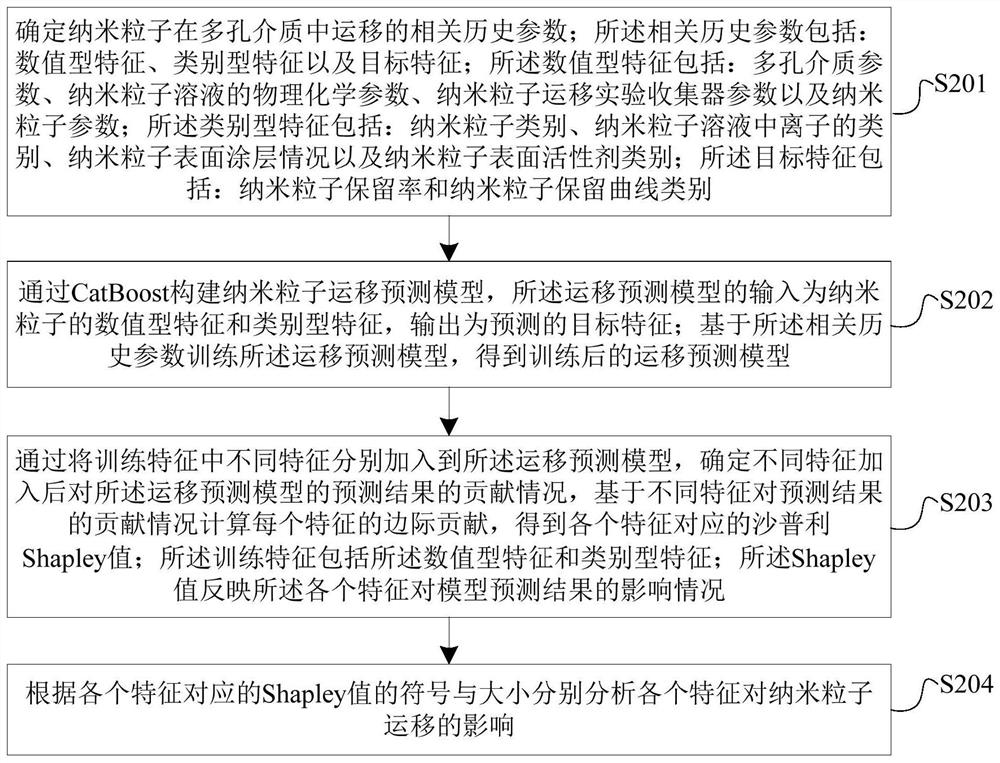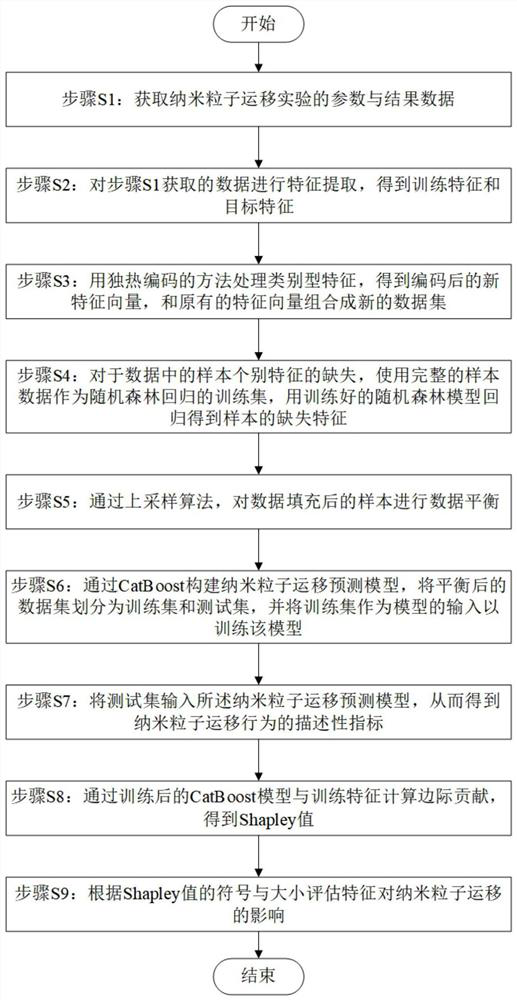Prediction method of nanoparticle migration and influence factor analysis method and system thereof
A nanoparticle and prediction method technology, which is applied in the field of nanoparticle parameter prediction and analysis, and can solve problems such as inaccurate nanoparticle prediction models and insufficient interpretation of migration parameters
- Summary
- Abstract
- Description
- Claims
- Application Information
AI Technical Summary
Problems solved by technology
Method used
Image
Examples
Embodiment 1
[0108] Example 1: Validation verification of the prediction method.
[0109] In this example, the validity of the prediction method proposed in the present invention is verified by using the experimental data of nanoparticle migration columns in porous media disclosed in published literature. 19 training features and 2 target features were extracted from the database to build a prediction model. The target features are retention rate (used to establish regression model) and retention curve category (used to establish classification model), which are used to represent the total amount and distribution of nanoparticles retained in the porous medium during the migration process, respectively. The database contains a total of 411 effective samples, among which the target feature of 403 samples is the retention rate, which is used for regression prediction; the target feature of 325 samples is the retention curve category, which is used for regression prediction. Among all 19 trai...
Embodiment 2
[0137] Example 2: Effectiveness of Feature Analysis
[0138] Using the database in Example 1 and the optimal prediction model after training, the characteristics affecting the retention rate and retention curve type were analyzed by the SHAP method. In each analysis, the 10 features that have the greatest impact on the model output are selected as the key features, and combined with the existing theory, the validity of the analysis method used is specifically verified, as explained below:
[0139] (1) Analysis on the characteristics of the retention rate
[0140] The interpretability analysis results of retention rate based on SHAP are as follows: Figure 8 shown. The associated potential information (particle IEP, particle potential, and collector potential), pore flow velocity, solution concentration, influent volume, and particle size have a greater impact on model predictions than other features.
[0141] From the Shapley value results, it can be seen that higher partic...
PUM
 Login to View More
Login to View More Abstract
Description
Claims
Application Information
 Login to View More
Login to View More - R&D
- Intellectual Property
- Life Sciences
- Materials
- Tech Scout
- Unparalleled Data Quality
- Higher Quality Content
- 60% Fewer Hallucinations
Browse by: Latest US Patents, China's latest patents, Technical Efficacy Thesaurus, Application Domain, Technology Topic, Popular Technical Reports.
© 2025 PatSnap. All rights reserved.Legal|Privacy policy|Modern Slavery Act Transparency Statement|Sitemap|About US| Contact US: help@patsnap.com



